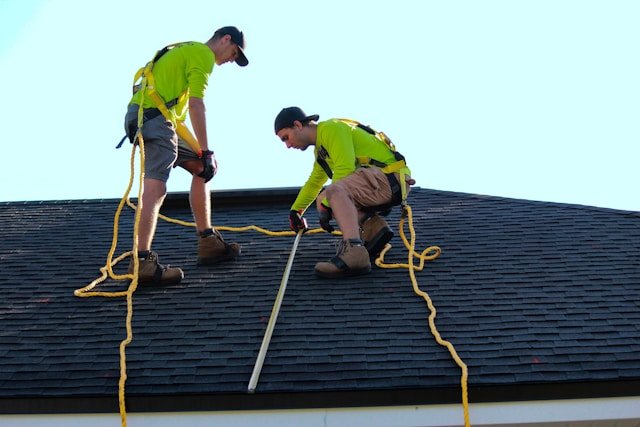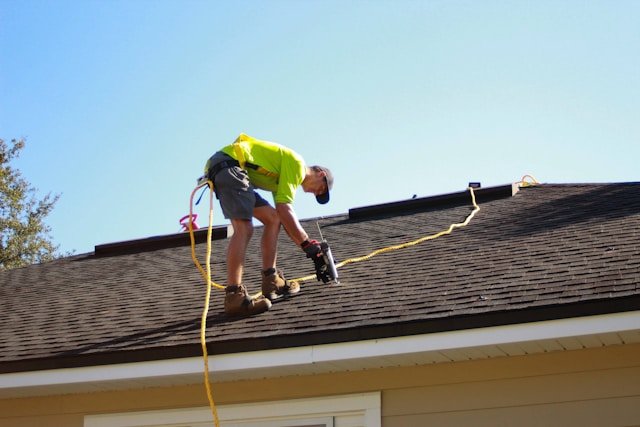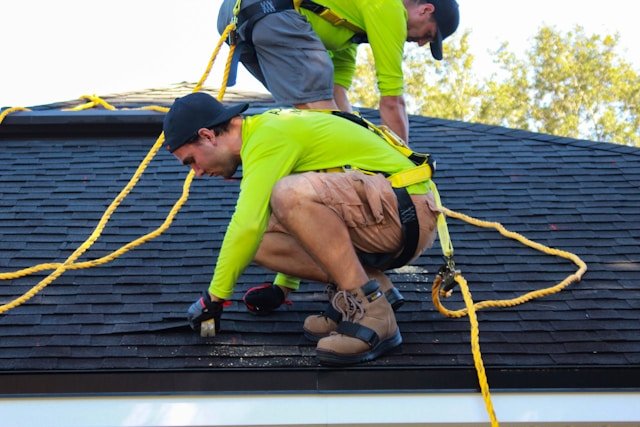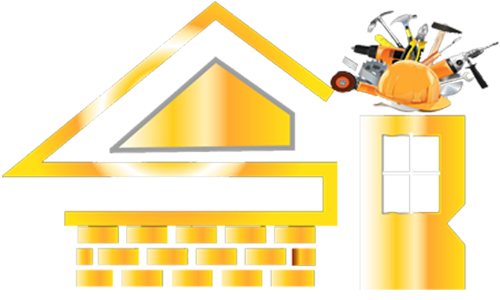
Do you ever think about why you need a commercial roof inspection for your business? You might assume everything is going well, but hidden issues can cause big problems. The truth is, a small problem today can turn into a major headache tomorrow. Roof inspections help identify issues early, and they will save you from costly repairs later.
A roof inspection isn’t just about fixing leaks; it’s about protecting your business, your employees, and your customers. In Brooklyn, where the weather can change quickly, keeping your roof in good shape is more important than ever. It can even help you lower energy costs and avoid disturbance to your business. So, have you thought about the last time you checked your roof?
What Are the Key Benefits of Commercial Roof Inspections for Your Business?
Have you ever considered the value of a regular roof inspection for your business? Most owners don’t think about their roof until a problem occurs, but regular inspections provide long-term benefits. Here are the key reasons why you should invest in routine roof checks for your business:
- Early Detection of Issues: Small roof problems can be detected before they turn into expensive repairs. This can save you time and money by fixing issues while they’re still manageable.
- Cost Savings: Regular inspections help you avoid costly emergency repairs. When roof issues are caught early, they are cheaper to fix. The early detection process can significantly reduce your roofing expenses.
- Enhanced Safety: A well-maintained roof keeps your business. Roof damage, such as leaks or structural issues, can create risky conditions. Professional roof inspections help identify these risks early and protect your employees and customers.
- Longer Roof Lifespan: Consistent roof inspections and maintenance keep your roof in good condition, which can extend its lifespan and delay the need for expensive replacements. A strong roof can increase your property value.
- Improved Energy Efficiency: Regular inspections help identify ways to improve your roof’s insulation. A properly maintained roof regulates the temperature inside your building. This results in lower energy bills and a more comfortable workspace.
Commercial Roof Inspection Checklist: Essential Areas to Check
Before your commercial roof inspection, it’s helpful to know what areas the inspector will focus on. Here’s a quick checklist of key items to check during the inspection:
- Roof Surface: Look for visible damage, cracks, or missing shingles.
- Flashing: Check around edges, chimneys, and vents for leaks.
- Drainage Systems: Ensure gutters and downspouts are clear and working properly.
- Roof Penetrations: Inspect areas around vents, skylights, and pipes for any gaps.
- Structural Integrity: Look for sagging or weakness in the roof structure.
- Insulation: Make sure the roof’s insulation is intact and effective.
- Leaks: Check the interior of the building for signs of water damage.
- Ventilation: Verify proper airflow to prevent moisture buildup.
How to Prepare Your Property for a Commercial Roof Inspection
Preparing your property for a roof inspection makes the process smoother and more efficient. Here’s how to get ready for the inspection:
- Clear the Roof of Debris: Remove any objects or debris that might block the inspector’s access to the roof. This helps them conduct a proper inspection without obstacles. Clearing the roof ensures the inspector can examine all areas without delay.
- Check for Interior Water Damage: Look for signs of leaks or water damage inside your building. If you notice any issues, point them out to the inspector. This will help them assess any possible connection between interior damage and the roof’s condition.
- Ensure Easy Access to the Roof: Make sure all access points to the roof are clear and safe. This includes roof ladders or hatches. Ensuring easy access speeds up the inspection and allows the inspector to thoroughly check the roof.
- Provide Roof History: Gather any past inspection or repair reports. This information helps the inspector understand the roof’s history and can guide their assessment. It’s important to know that past issues help them focus on areas that may need extra attention.
The Commercial Roof Inspection Process
A roof inspection helps you identify potential problems early. It can save you money and time. Here’s the step-by-step process of a commercial roof inspection, ensuring your roof stays in good condition.
- Initial Visual Check: The inspector starts by walking around the roof to look for obvious issues. This includes checking for damaged materials, trash, or anything that might affect the roof’s performance.
- Detailed Surface Examination: The next step is to closely inspect the roof’s surface. The inspector looks for cracks, loose materials, and signs of wear. These issues are often small but can worsen if not addressed promptly.
- Flashing and Seals Assessment: The flashing around vents, chimneys, and skylights is checked for proper sealing. If flashing is damaged or missing, it can allow water to leak into the building, causing further damage.
- Drainage System Check: Gutters and downspouts are cleaned and examined. Blocked drainage systems can prevent water from draining properly, leading to water buildup that can damage the roof and building structure.
- Roof Penetration Inspection: Areas where pipes, vents, or skylights penetrate the roof are carefully inspected for gaps or cracks. These areas are common sources of leaks and require proper sealing to keep water out.
- Structural Evaluation: The inspector checks for sagging or weak areas in the roof structure. This ensures that the roof can handle weight and prevents the risk of collapse.
- Insulation and Ventilation Review: The inspector verifies the condition of the insulation and ensures that the roof is properly ventilated. This helps prevent energy loss and maintains a comfortable temperature inside the building.
- Final Report and Recommendations: After the inspection, the inspector provides a detailed report of their findings. This includes any necessary repairs or maintenance suggestions to extend the roof’s lifespan and ensure its integrity.

Pro Tip
An expert tip for a commercial roof inspection: Always prioritize checking the roof’s drainage system. Clogged gutters or downspouts can lead to water buildup, which causes leaks and long-term damage if not addressed early.
How Much Does a Commercial Roof Inspection (Per Sq. Ft.) Cost in Brooklyn, NYC?
Roof inspection costs can vary based on the type of inspection, material used, and labor involved. Here’s an estimate of typical costs for a commercial roof inspection in Brooklyn, NYC:
| Inspection Type | Material Cost | Labour Cost | Total Cost |
| Basic Visual Inspection | $0.05 – $0.10/sq. ft. | $0.15 – $0.30/sq. ft. | $0.20 – $0.40/sq. ft. |
| Infrared Thermography | $0.15 – $0.30/sq. ft. | $0.20 – $0.35/sq. ft. | $0.35 – $0.65/sq. ft. |
| Drone Inspection | $0.10 – $0.20/sq. ft. | $0.20 – $0.40/sq. ft. | $0.30 – $0.60/sq. ft. |
| Comprehensive Inspection | $0.20 – $0.40/sq. ft. | $0.30 – $0.50/sq. ft. | $0.50 – $0.90/sq. ft. |
Types of Commercial Roof Inspections
A commercial roof inspection is a crucial component of maintaining your building’s integrity. It depends on the size of the roof, your budget, and the specific concerns you may have; different inspection types can be chosen. Here are the common types:
- Basic Visual Inspection: This is a simple walk-through to check for visible damage, such as leaks or cracks. It’s a cost-effective method that provides an overview of the roof’s condition.
- Infrared Thermography Inspection: This advanced inspection process can detect hidden water or heat loss under the roof surface. It’s ideal for finding issues that are not visible to the naked eye.
- Drone Inspection: A drone is used to inspect the roof from above. It captures detailed photos and videos. This type of inspection is useful for hard-to-reach areas and large roofs.
- Comprehensive Inspection: This is the most detailed inspection process. It involves a combination of visual checks, infrared scanning, and drone footage. A comprehensive inspection is a detailed process generally used for larger, more complex roofs.
Which is the Suitable Type of Commercial Roof Inspection for Brooklyn’s Weather?
For Brooklyn’s variable climate, a Comprehensive Inspection is the best choice. It provides a detailed assessment, including hard-to-spot issues like water damage and insulation problems.
Identifying Common Issues During Roof Inspections
Roof inspections reveal several common problems that can affect the roof’s performance. Early identification can help prevent larger, more costly repairs. Here are some of the most frequent problems found during inspections:
- Leaks and Water Damage: Leaks are a major issue, often caused by cracked flashing or damaged roofing materials. Water damage can spread quickly and cause mold growth or weaken the building structure if not repaired early.
- Cracked or Missing Shingles: Missing or cracked shingles can expose the roof’s underlying layers to the elements. These issues are typically caused by extreme weather conditions, age, or improper installation.
- Damaged Flashing: Flashing around vents, chimneys, and skylights can crack. If the flashing is damaged, water can leak into the roof and cause bigger problems.
- Clogged Gutters and Drains: When gutters or drains are blocked, water collects on the roof. This can lead to leaks and rotting when the water can’t flow off properly.
- Poor Insulation and Ventilation: Roofs with bad insulation or ventilation can cause temperature problems inside the building. This can lead to mold, moisture, and higher energy bills.
- Sagging or Weak Roof Structure: A sagging roof means there’s too much weight or water buildup. This weakens the roof and can cause it to collapse if not fixed quickly.

How Often to Inspect a Commercial Roof
Regular roof inspections are crucial to maintaining the integrity of your commercial property. It’s recommended to inspect your roof at least twice a year, ideally in the spring and fall. Inspections should also be scheduled after any major weather events, such as storms or heavy snowfall, as these can cause hidden damage.
Early inspections help identify minor issues before they become costly repairs. By staying on top of roof care, you can extend its lifespan and avoid major disruptions to your business.
Expert Insights for Commercial Roof Inspection
- Inspect after severe weather events to catch any sudden damage.
- Always check roof drainage systems to avoid water buildup.
- Regularly clean gutters and downspouts to maintain proper water flow.
- Look for signs of leaks inside the building, especially after a rainstorm.
- Invest in professional inspections to get a detailed assessment.
- Check roof seams and joints regularly for signs of damage.
- Maintain clear access to the roof for easier inspections.
- Keep records of inspections to track the roof’s condition over time.
Where to Find a Professional Roofing Contractor in Brooklyn, NYC?
Are you looking for an expert roofing contractor in Brooklyn, NYC? SR General Construction has you covered! Our business is located at 8807 Avenue B, Brooklyn, NY 11236, United States, in the Canarsie area.
We proudly serve all areas of Brooklyn with high-quality, durable roofing solutions. From new installations to repairs and maintenance, we provide the best service at affordable prices. Contact us and experience why we’re Brooklyn’s roofing experts!
FAQ
1. Why is a commercial roof inspection necessary?
A commercial roof inspection helps identify hidden issues before they become major problems. By detecting issues early, you can prevent costly repairs and extend the lifespan of your roof, ultimately saving your business time and money.
2. How often should I schedule a commercial roof inspection?
It’s recommended to inspect your commercial roof at least twice a year, usually in spring and fall, to identify any seasonal damage. Additionally, schedule inspections after major weather events, such as storms or heavy snow, to ensure no hidden damage has occurred.
3. What does a commercial roof inspection include?
A roof inspection typically includes a visual check of the roof surface, flashing, drainage systems, roof penetrations, insulation, and structural integrity. It also involves checking for leaks or water damage inside the building to ensure no issues have spread.
4. How much does a commercial roof inspection cost?
The cost of a commercial roof inspection can range from $200 to $500 for a basic visual check. It depends on the size and complexity of the roof. More detailed inspections using infrared technology or drones can cost between $500 and $1,000, but they provide a much deeper analysis of the roof’s condition.
5. What happens if issues are found during the inspection?
If issues are found, the inspector will provide a detailed report outlining the problems and suggesting necessary repairs. They may also recommend maintenance tasks that can help extend the life of your roof and prevent future issues.
6. How long does a commercial roof inspection take?
The time required for a roof inspection varies depending on the size of the roof and the complexity of the inspection. On average, a roof inspection can take between one and two hours.
7. Are roof inspections covered by insurance?
In some cases, roof inspections can be covered by insurance, particularly if the inspection is conducted after a storm or other major weather event. It’s important to review your insurance policy or consult with your provider to determine if roof inspections are included in your coverage.
